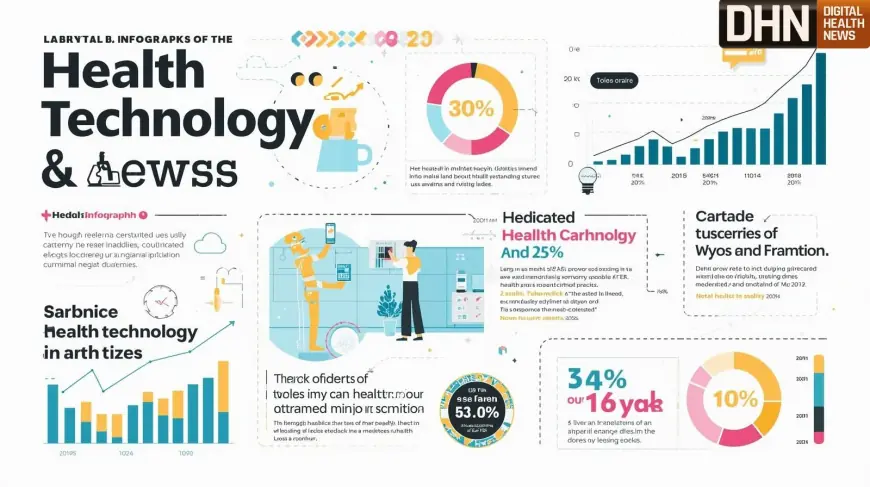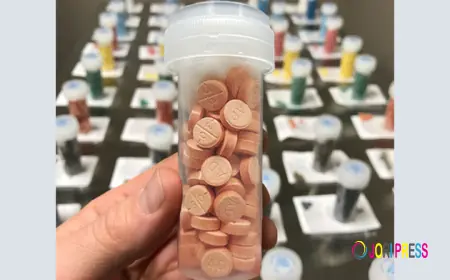The Role of Health Tech News in Promoting Public Awareness and Adoption

In an age where digital transformation is reshaping every facet of our lives, healthcare is undergoing a revolution driven by technological innovation. From wearable devices that monitor vitals in real time to AI algorithms diagnosing diseases faster than doctors, the integration of technology into healthcare is no longer a distant dream—it's our present reality. Amid this fast-paced evolution, Health Tech News plays a critical role in educating the public, promoting awareness, and accelerating the adoption of new technologies across all levels of healthcare.
Understanding Health Tech News
Health Tech News refers to the ongoing stream of information, articles, reports, and updates related to the intersection of healthcare and technology. This can encompass a wide variety of topics, including:
-
New medical devices and wearables
-
Telemedicine and remote patient monitoring
-
Health data analytics and artificial intelligence
-
Blockchain in healthcare recordkeeping
-
Digital health apps and platforms
-
Robotics in surgery and rehabilitation
-
Biotechnology innovations
-
Regulatory updates and clinical trials
With such a broad and complex spectrum of content, Health Tech News serves as a vital bridge between the creators of these technologies and the public, patients, healthcare professionals, investors, and policymakers.
Health Tech News as a Driver of Public Awareness
Bridging the Knowledge Gap
One of the most important roles of Health Tech News is bridging the knowledge gap between cutting-edge technology and public understanding. Medical innovation often progresses at a pace that outstrips the average consumer’s ability to keep up. Complex topics like machine learning in radiology or CRISPR gene editing can be intimidating and difficult to digest.
Health Tech News outlets, by breaking down these topics into understandable, accessible formats, ensure that laypeople can stay informed. Through explainer articles, infographics, interviews with experts, and visual storytelling, they demystify emerging technologies and make them more relatable.
Informing Decision-Making
For patients, access to reliable Health Tech News empowers them to make better decisions about their health. Learning about new treatment options, drug therapies, diagnostic tools, or monitoring devices can change how individuals manage chronic conditions like diabetes or hypertension.
For instance, when people read about the success of continuous glucose monitors (CGMs) in diabetic care, they’re more likely to inquire about them with their healthcare provider. Similarly, a parent who reads about telehealth innovations in pediatric care might feel more comfortable seeking remote consultations for their child.
Combatting Misinformation
In an era of misinformation, especially concerning health, the role of trustworthy Health Tech News becomes even more crucial. Social media is rife with unverified claims, pseudoscience, and viral myths. Reputable health tech journalism counters this by providing well-researched, expert-backed reporting that guides the public toward evidence-based choices.
This was especially evident during the COVID-19 pandemic, where the dissemination of accurate Health Tech News played a pivotal role in educating people about vaccines, diagnostics, remote monitoring tools, and the importance of digital contact tracing apps.
Encouraging Technology Adoption in Healthcare
Building Trust and Familiarity
Adoption of any new technology requires trust. People are more likely to embrace innovation if they understand it. Through consistent, positive exposure in Health Tech News, new technologies can transition from “experimental” to “essential.”
For example, when news outlets consistently report on the effectiveness and convenience of telehealth platforms, public perception gradually shifts. What was once seen as impersonal or inferior becomes recognized as a valid, often preferable, healthcare option—especially for those in rural or underserved areas.
Highlighting Success Stories
Case studies and success stories shared through Health Tech News can have a profound influence on adoption rates. Real-world examples of patients benefiting from a particular device or healthcare institution successfully implementing a new AI diagnostic tool can persuade others to consider the same path.
When individuals read about how wearable ECG monitors helped a patient detect arrhythmia early, or how AI-assisted mammography improved early cancer detection rates at a hospital, it humanizes the technology and builds emotional and intellectual buy-in.
Influencing Healthcare Providers and Policymakers
While public adoption is vital, much of healthcare technology adoption depends on decisions made by providers and policymakers. Health Tech News is a critical resource for clinicians, hospital administrators, and regulators who need to stay updated on innovations that could improve patient care, reduce costs, and meet compliance standards.
Reports on FDA approvals, clinical trial outcomes, and regulatory changes can directly influence which technologies are adopted at scale. For instance, when a new remote patient monitoring system gains Medicare reimbursement status, timely coverage in Health Tech News can drive rapid uptake by providers.
The Role of Digital Platforms and Media
Social Media Amplification
Today, most Health Tech News doesn’t just live on traditional websites. Platforms like Twitter (now X), LinkedIn, and Instagram have become powerful tools for distributing updates, particularly to professionals and early adopters. Healthcare startups often use these platforms to showcase new launches, gather feedback, and build communities.
Influencers in digital health—doctors, technologists, and patient advocates—further amplify Health Tech News by sharing articles, adding commentary, and engaging with followers. This viral model of information sharing speeds up awareness and adoption cycles.
Podcasts and Video Content
Multimedia platforms also enhance the reach and impact of Health Tech News. Podcasts like “Healthcare Weekly” or “The HealthTech Podcast” offer in-depth discussions with innovators and insiders. YouTube channels feature device reviews, demos, and conference highlights. These formats appeal to different learning preferences and broaden the audience base beyond traditional readers.
Challenges and Responsibilities
Navigating Hype vs. Reality
One of the major challenges for Health Tech News outlets is navigating the fine line between optimism and overhyping. Not every new technology lives up to its promise. Some innovations fail clinical trials, others raise ethical concerns, and a few may even cause harm if misused.
Responsible Health Tech News should provide balanced coverage—highlighting potential benefits while also scrutinizing limitations, risks, and regulatory hurdles. Sensational headlines may drive traffic, but they can also set unrealistic expectations and erode trust.
Ensuring Equity in Reporting
Another challenge is ensuring inclusivity in coverage. Health Tech News must represent diverse voices and highlight technologies that serve marginalized communities. Reporting on tools designed for low-income, disabled, or rural populations is just as vital as covering high-end robotic surgeries or AI diagnostics for elite hospitals.
Data Privacy and Ethical Concerns
As more technologies collect personal health data, Health Tech News must also raise awareness about data privacy and security. By reporting on breaches, ethical concerns, and legal frameworks like HIPAA or GDPR, journalists help the public stay vigilant and informed about their rights.
Conclusion
In a world where healthcare and technology are increasingly intertwined, Health Tech News is more than just industry updates—it’s a public service. It empowers patients to take control of their health, equips providers with knowledge to improve care, and ensures that policymakers and stakeholders remain aligned with the rapid pace of innovation.
By fostering awareness, building trust, promoting ethical debate, and encouraging adoption, Health Tech News plays a foundational role in shaping the future of healthcare. As technologies continue to evolve, so too must the news platforms that track them—committed to accuracy, accessibility, and the wellbeing of all.

What's Your Reaction?
 Like
0
Like
0
 Dislike
0
Dislike
0
 Love
0
Love
0
 Funny
0
Funny
0
 Angry
0
Angry
0
 Sad
0
Sad
0
 Wow
0
Wow
0


















































